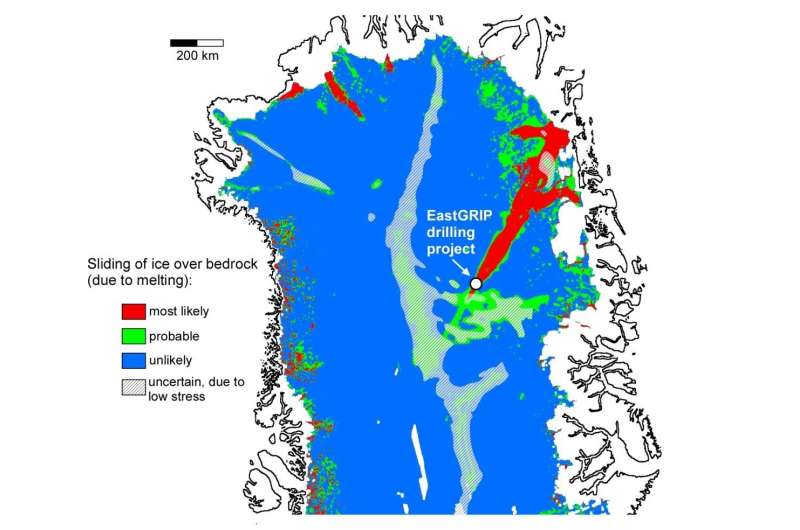Polar ice may be softer than previously thought

Ice is a material that can flow like a very viscous liquid. In the polar ice sheets, it flows towards the oceans under its own weight. Knowing how fast the ice flows is of crucial importance to predict future sea level rises, particularly under changing climate conditions. Professor Paul Bons and Junior Professor Ilka Weikusat from the University of Tübingen's Geosciences Department, working with scientists from the Alfred Wegener Institute in Bremerhaven, the University of Otago (New Zealand) and the Autonomous University of Barcelona (Spain), used flow velocities at the surface of the northern Greenland Ice Sheet for a new study now published in Geophysical Research Letters. These data from satellite images suggest that the polar ice is softer than scientists believed until now.
The flow has two components: the internal shearing flow that depends on the viscosity of the ice, and basal motion, which is the ice sheet sliding along the bedrock, especially when the ice melts at that base. From the surface velocities of the ice the researchers calculated the stresses that drive the flow.
Previous studies indicated that up to 50 percent of the Greenland Ice Sheet is melting at its base. "This new study shows that that is probably overestimated, because previous studies assumed ice to be harder than it actually is," says Paul Bons. The new assessment significantly reduces the area where basal motion – and therefore basal melting can be expected in the Greenland study area. "This does not necessarily mean that ice will now enter the oceans more slowly and delay sea-level rise. Instead, the results suggest that the internal deformation of ice is more important than was thought before," Ilka Weikusat explains. The new findings will be used to adapt the models predicting sea level changes.
The share of ice transport towards the oceans between melting at the base or internal shearing of the whole ice body has to be reconsidered, but cannot be determined from surface data alone. Instead, deep drill cores into fast flowing ice are important, such as the ongoing EastGRIP project in which some of the authors are involved.
More information: P. D. Bons et al. Greenland Ice Sheet - Higher non-linearity of ice flow significantly reduces estimated basal motion, Geophysical Research Letters (2018). DOI: 10.1029/2018GL078356
Journal information: Geophysical Research Letters
Provided by Universitaet Tübingen



















